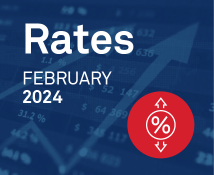The more the U.S. government borrows ($2.6 trillion in January), the more U.S. Treasury traders trade. The average daily notional volume (ADNV) of $891 billion in January was up an impressive 46% year over year, and the activity was surprisingly consistent throughout the month. Volumes were still higher at month end and for economic data releases (i.e., U.S. GDP and the FOMC meeting), but the moves were more muted. Only two days saw over $1 trillion trade, and conversely, only four days saw volume below $800 billion. All of this while volatility dropped slightly, suggesting healthy market dynamics despite ever-present geopolitical uncertainty.
The strong market-wide volumes paved the way for nearly $500 billion to trade electronically in the month, nearly a record. Bloomberg, Fenics and Tradeweb all had record months from an ADNV perspective, with buy-side activity continuing to drive the market forward.
While trading between dealers continues to shrink, making up only 25% of January’s volume, their U.S. Treasury holdings continue to grow. At month end, the average of dealer net positions in January was $225 billion, up 42% year over year. Whereas Treasury securities proved to be a liability the last two years as rates rose, they’re increasingly looking like a smart investment as rates are expected to decline. Most of the position growth has come in bills and notes with maturities below two years, and between three and six years. Holdings of both are at current cycle highs.
MethodologyCoalition Greenwich continuously gathers data and insights from U.S. Treasury market participants, including asset managers, hedge funds, primary dealers, market makers, and trading platforms. The data, once aggregated, normalized and enhanced, is analyzed by our market structure research team who identify key areas of change and the likely direction of volume, holdings, market share, and other trends in the coming months.

